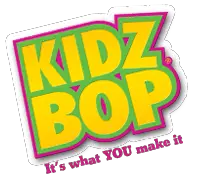I’m so happy that things are going better on the school front. I think that two weeks was the transition time for Michael. On Wednesday, he came home and said that school was 100%. On Thursday, he said that it was 1,000%. Despite the fact that he needs to work on his percentages, those words are music to my ears.
Sean, on the other hand, has loved being home alone with me since the third day of school. We were already close, but I must say that he is more attached and that I am learning more about him as an individual now that we have constant one on one time. (My husband jokes, “Great! Now this one won’t want to leave you and go to school one day either.”) We do have a lot of fun during the day though and one part of that is music. We mix it up by singing, dancing, playing instruments and such. Sean can groove with his little self. When he “really” gets into the music, he gets down on the floor and tries to break-dance. It’s so cute – he’s about as good at it as I am (which is not very…).
Since music is such a fun part of our days, I’m happy to share this guest post from KidzBop. (It reminded me to make sure to include Michael in music time also/not to leave his musical education to the schools.) Enjoy!

KIDZ BOP’s Tips for Introducing Kids to Music
Studies show that kids who are exposed to music from an early age do better in school. Unfortunately, most U.S. schools have cut back or even eliminated their arts & music programs due to shrinking budgets. With back-to-school season here, KIDZ BOP, the #1 music brand in the US for kids ages 5-12, has developed their Top 6 Music Tips—for fun, inexpensive ways parents can introduce their kids to music at home—and maybe even get them away from the TV and up and moving in the process!
1. Sing Along! Sing to AND with your child from an early age. Whether it’s “The Itsy Bitsy Spider” or a hit song by your favorite top 40 artist—kids love to sing along and share their favorite music with you! You don’t have to be a great singer – just get into the moment and create happy, shared memories.
2. Sing to Learn! Music is a powerful teaching tool. Kids can learn the alphabet, numbers, vocabulary and rhyming—keys to building early literacy skills—through singing or listening to music. After you’ve shared a song together, talk to your child about the words. What do you think this song is about?…What does that word mean?…What words do you hear that rhyme?…How do you think the singer is feeling? Why?
3. Turn Off and Tune In! Turn off the TV and turn on the radio or iPod. Cultivate your child’s musical taste by exposing him or her to all different genres of music, including pop, rock, hip hop, classical and country. Music is a kid-friendly vehicle for introducing tolerance for other cultures, styles, and tastes.
4. Play Along! Numerous household items can be turned into musical instruments to help develop your child’s inner rock star. Make drums out of pots & pans and empty boxes, musical shakers and maracas out of coffee cans or water bottles filled with dried beans (make sure they are securely closed) and horns out of paper towel tubes…the possibilities are only limited by your imagination! Educational experts consider imaginary play to be a fun and valuable tool for developing your child’s reasoning and comprehension skills.
5. FREE Musical Instruments! Musical instruments are expensive. When your child shows interest in picking up the clarinet or violin, don’t despair! Check out websites like Craigslist or local swap and barter clubs to find cheap second hand (or better yet, FREE) instruments.
6. Just Dance! Music is good for the body and soul. The CDC reports that almost 1 in 3 kids (ages 2-19) in the US are overweight or obese. Dance is not only great exercise, it helps teach rhythm and coordination. So channel your inner “Dancing Queen” and “Twist and Shout” with your kids.
What are some ways that you incorporate music into your family lifestyle?